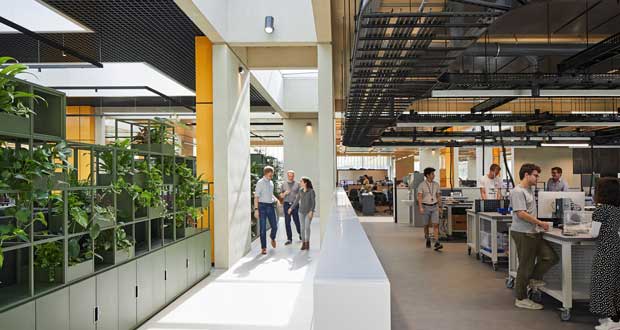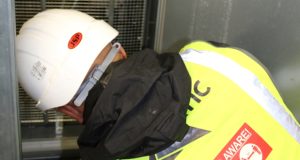The third edition of the British Council for Offices’ (BCO) flagship Guide to Fit-Out, which sets out best practice and expert advice on office interior design for occupiers and built environment professionals has been published.
The Guide is an important resource for occupiers and their design teams seeking to attract and retain talent amid changing working patterns and environmental regulations. It offers recommendations for every stage of the fit-out process, from the selection of materials and procurement processes to regulations for the management of office spaces in-use. It is intended to be used in conjunction with the BCO’s Guide to Specification, which offers a framework for delivering best-in-class workplaces tailored to occupier needs.
Key guidance for best-in-class office fit-out includes:
- Facilitating hybrid working – through the design of a variety of flexible spaces
- Adopting human-centric design – to help people feel comfortable and able to do their best work
- Embedding AI and smart building technology – to enable intuitive interaction with building systems
- Minimising life cycle carbon – through circular design and efficient operations to support the net zero transition
- Enhancing wellbeing – by providing a healthy and productive workplace
This is the first new edition of the Guide to be published since 2011, which now includes standalone sections on health and wellbeing, fire, acoustics, vertical transportation and structural engineering. These changes, says the BCO, reflect the increased importance of these areas for occupiers seeking greater flexibility, adaptability and connectivity from their workspaces.
The Guide highlights the growing importance of offering a variety of amenities and spaces to help meet the changing needs of diverse workforces. In particular, it notes a shift in workspace design in reaction to hybrid working patterns, whereby space previously allocated to desks can now be used for collaborative and social spaces, as desks are made to ‘work harder’ through a hot-desking approach.
The Guide likewise offers a checklist for multisensory design interventions to promote occupier health and wellbeing. These include connections with nature through the introduction of plants and natural materials. The promotion of active working is covered, through a mix of spaces and furniture for standing, walking and sitting. The Guide also recommends spaces for quiet work and rest, and the use of sports facilities and artwork to alleviate stress and stimulate thought.
The growing integration of smart technology is reflected throughout, with recommendations included on its application for a host of operational needs, from security and maintenance to managing space and helping to attract talent.
The Guide offers comprehensive guidance on setting clear, KPI-driven sustainability briefs aimed at reducing the life cycle carbon of offices. Along with monitoring energy use to identify areas for improved efficiency, it encourages occupiers to consider their environmental and social ambitions before deciding on a brief for fit-out.
To help with the reduction of embodied carbon, the Guide outlines the benefits of a circular economy approach to fit-out, whereby incoming and outgoing occupiers can work together with building owners to minimise waste and maximise reuse and retention of furnishings and fixtures. The adoption of materials passport systems is also singled out as a means of increasing opportunities for the reuse of building materials.
To help the industry access case studies of best practice, the Guide includes examples from BCO Award-winning projects. The interactive digital publication links to a rich online library that will be updated on an ongoing basis.
Richard Kauntze, Chief Executive at British Council for Offices, said: “The BCO Guide to Fit-Out is not just theoretical but highly practical. In today’s climate, the importance of health, wellbeing, and sustainability cannot be overstated. Encapsulating the latest industry trends, the new edition of the Guide is an indispensable resource in the current era of rapid workplace transformation. This is essential reading for anyone involved in office design and fit-out, reaffirming the BCO’s role as a leader in shaping the future of work environments.”
The production of the Guide was led by Neil Pennell, Head of Design Innovation and Property Solutions, Landsec and Peter Williams, Senior Technical Advisor, Stanhope – Chair and Deputy Chair respectively of the BCO Technical Affairs Committee. Over 100 industry professionals contributed to and supported the creation of the final document, through participation in working groups or peer reviews.
Elevate your visitor management strategy with Eptura’s Visitor E-Book.
This comprehensive guide from the global worktech company is packed with advanced insights and practical tips on optimising your visitor management systems. Discover how to implement advanced visitor tracking, integrate seamlessly with access control systems, and ensure data protection and compliance.
The e-book also covers essential strategies for emergency management preparedness and adapting your infrastructure for flexible workplaces. Get your e-book today by clicking here and start making a significant impact!





